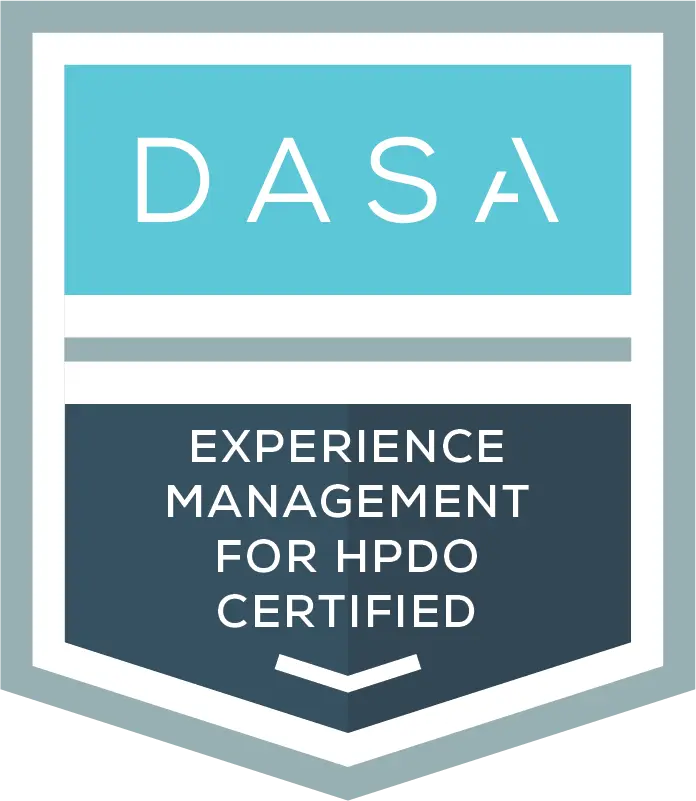Introduction: The Strategic Value of Experience Management
There is a growing recognition of experience as a critical success factor in business, extending beyond service quality to the emotional and lasting impressions left on users/audiences. This article will explore how organizations can leverage experience management to improve customer satisfaction, developer productivity, and overall business success. It serves as an introduce experience management (XM) as a discipline that aligns human-centric design with measurable business outcomes.
Understanding Experience Management: More Than SLAs
The Shift from SLAs to XLAs
Service Level Agreements have served us well for many decades as the linchpin for governance of services in the service economy. Once you have successfully deployed a service and its accompanying SLA, the emphasis shifts to optimizing and ensuring the longevity of the service through incident and change management. The SLA and the KPIS that feed it often remain unchanged for decades.
Twenty-five years ago, the economy began a transition from service orientation to experience orientation. The service and its output became less important than the outcome of the service and the human experience of that outcome on your audience.
A new science was born. It started crudely with customer satisfaction (CSAT) scores and Net Promoter Scores (NPS) but has since evolved into a more effective and comprehensive understanding of the human experience of, for example, digital products.
The modern way to govern and ensure the human experience of digital products is the XLA – The Experience Level Agreement. This mechanism builds on the service level by adding a layer of intent and design, emphasizing the emotional and cumulative aspects of audience interactions.
Audience sentiment and emotional memory shape perceptions, which incites behaviors to accept or walk away from a product or service of a person.
When our success with our audience depends not on the quality of the service, but on the perception of the value of the service, the game changes. And when we look at things differently, the things we look at change.
Experience Over Time: Building Perceptions
One of the things that changes is the nature of our understanding of the relationship with our audience. In the service economy, and indeed in the preceding product/manufacturing economy, we were obsessed with transactions. Mainly, the value of a transaction and the experience of the transaction. This is where CSAT and NPS found their niche.
However we now know that the concept of cumulative experiences and how individual interactions form a broader narrative. People develop their memory of experiences like how birds build nests – from the sources and interactions available to them. Through pervasive social media, those sources are almost infinite today.
Within our own designed interactions, we now use the “Peak End Rule.” This describes the key moments that matter for the audience. This shapes how they remember the most intense and final moments of a journey of interactions. This understanding allows us to align design efforts to amplify positive peaks and conclude interactions with strong, memorable impressions.
Given that memories are the hallmark of experience, we want our defined experiences to be memorable, and/or meaningful, and/or transformational.
Key Drivers of Experience Management
Anticipating Experience Expectations
If we all (the audiences) build our expectations like birds build nests, where do we get our materials from. Audiences draw from four specific sources: brand expectation, brand promises, personal expectations, and past experiences.
Brand Expectation is formed by the branding of the product, service, or individual. Apple customers have a very clear understanding of the branding. It drives a lot of their decision making. The same isn’t true of LG or Samsung customers.
Brand Promise is in our hands. What are we promising the audience? Are we promising them a deliverable within a week? Are we promising them that the MVP will reflect a specific user/audience story?
Individual expectations are a little fuzzier, but can certainly be ascertained. What do I think a full-stack developer can handle? What do I think an MVP should look like? What colour do I expect a fast car to be? How long is too long to wait in a queue?
The trickiest source of all, are our past experiences – these are the memories of a similar previous experience. Oftentimes people approach a new situation with either a wish to not repeat an earlier bad experience or to recreate an amazing experience they once had. These expectations can heavily influence the new experience expectations. Have you ever met someone who reminds you a lot of someone else you once knew, and without even thinking you find yourself approaching them in the same way as that ‘other’ person.
Understanding, aligning, and adjusting expectations is a necessary skillset in the experience economy.
Imagine we are creating a hiring and onboarding experience for a product designer at Ikea, would we approach that in the same way as a hiring and onboarding experience for a product designer at Dyson?
Experience Anxiety versus Experience Relief
Experience anxiety occurs when our audience becomes unsure that they should continue the path they are on. Their expectation of the experience outcome becomes negative, their faith in the journey they are on is weakened, or they are frozen and not moving at all.
Experience anxiety causes the audience to delay, disengage, or abort the journey. Experience anxiety has a severe impact on an organization. The audience doesn’t buy, doesn’t turn-up, returns the product, doesn’t renew, experiences burn-out, and can quietly or intentionally quit on the enterprise.
XLAs help signal when experience anxiety is occurring and can guide us on how we can insert experience relief. Rory Sutherland is the guru on Psycho-Logic and experience relief, he gives a great example with the Uber Map.
Before Uber, when we ordered a taxi to take us to the airport, we hoped that the taxi would arrive at the agreed time. If the taxi was late, experience anxiety set in. We were unsure whether the taxi was on its way, where it was, or if it would arrive on time; should we take another course of action, like order another taxi?
The Uber Map is nothing less than experience relief. The map gives us no more control than we had before, but now we are certain of where the taxi is and how long it will take to reach us. Good journey design takes account of both experience anxiety and experience relief, and XLAs help us to uncover and even solve for this.
Experience is Perishable
Technology such as machines, code, and networks are generally stable. Most things work well most of the time. If they aren’t broken and properly maintained, they can last forever. People, however, are self-programming sensors that create volatility in every situation. Their experience of a journey will change depending on the mood or mode they are in at any given time. So we need to understand not only what people are experiencing, but why they feel that way and how that affects their actions and memory of the experience and future choices. When our ambition is not being realized, we need to know whether we are dealing with an incident or a problem.
An experience can fail for sporadic, systemic, and gravitational reasons.
A sporadic failure can occur in the underlying XLA stack. There can be an operational failure, a technical failure, a data failure. Someone can be in a mode of thinking or an emotional mood not conducive to a positive experience.
A systemic failure is a change of circumstance which means that the journey can no longer work as designed, and the experience structurally falls short of the ambition. This can occur due to changes in the political, economic, social, technology, environmental and legal scenarios affecting the journey.
Examples include:
- Political: During the US election many people may choose to disengage from social media.
- Economic: A recession may mean that a specific experience is no longer worth the money value of time.
- Social: It might no longer be considered acceptable to attend bull-fighting.
- Technology: Watching sports on a low pixel TV.
- Environmental: Traveling by plane may be seen as undesirable compared to taking the train.
- Legal: People may not want to ride a bike or a motor-bike if a helmet is made compulsory.
A gravitational failure is when the experience expectations fall for no sporadic or systemic reason, causing the gravity of performance to occur. This can be due to competition, substitution, or boredom. In other words, the audience has literally lost interest in the defined experience. This is why Disney and Universal are continually creating new experiences, and why gaming has relentless pressure to upgrade and change.
The Role of Developers in Experience Management
1. Developers as Guardians of Digital Experiences
In the service economy, service is designed as an ITIL practice. It was the realm of the “ity’s” (availability, recoverability, serviceability, capacity etc.). The assumption being that, if the design was good, the experience would be good as well. Later we discovered through the revelation of Watermelon KPIs that this was a fallacy.
In fact with the evolution of DevOps or BizDevOps, there was an implicit shift of responsibility from the service design to developer-led experience accountability. Service design has implicitly ceded responsibility to the BizDevOps community. That requires some explicit change. We now understand that the human experience of digital products is much more than traditional UX or SUE.
Now we need to emphasize the developer’s new dual role of delivering technical quality and developing human-centric digital products. Developers should explicitly ensure seamless audience journeys through intuitive design and thoughtful functionality. They should also be trained on XLAs and experience management.
2. Experience Management as the Guardians of our Developers
Haystack reported in 2021, that 83% of developers report burnout. 58% of that burn-out was caused by cognitive overload. Those are embarrassing numbers. The humans doing BizDevOps are being sacrificed by the lack of effective experience management.
Developer Experience (DevEx) needs to be a central pillar in our management toolbox.
Luckily there is emerging education, best practices, and guidance available. DASA has published the experience framework. DORA has published the SPACE framework for optimizing developer experiences, focusing on flow state, cognitive load, and feedback loops.
So now we can and must implement experience management alongside automated development environments and feedback mechanisms to support developer well-being.
Experience Management is a Scale Business that Impacts Business Outcomes
Good experience management makes good business sense. Developers create digital products that create value; the better we do that, the better we earn revenue, retain customers, improve market share, launch new products, and improve the lives of our audiences such as employees, suppliers, customers, patients, students; the list is long.
So, we should avoid the trap of thinking in terms of specific people (ie, is Marsha happy?) and look instead at valuable personas (are the designers satisfied?). XLAs are a scale proposition, it is digital anthropology rather than psychology.
For instance, if a group of experience designers create the world’s best Starbucks store, XLAs ensure that that design can be implemented and managed across 4,000 stores in multiple geographies, cultures, languages etc.
How can we enable Agile and BizDevOps Objectives with experience management
Good experience management already builds on established BizDevOps practices like flow management, agile, A/B testing, outside-in thinking, MVPs and fastest value first.
When we create epics and user/audience stories, we should define the experience we wish to create. In addition to determining the business outcomes, this includes understanding the moments that matter, the potential areas for anxiety and relief. We should consider the cumulative nature of experience, the memories we wish to generate and the modes and moods of the audience as they pass through the journey.
When we have multiple teams involved, the defined experience should be shared and understood. This allows for compatible mini- and micro-experiences to be developed in smaller increments.
Our BizDevOps teams need to be responsible for including the relevant experience indicator data in their products. We need to be able to measure sentiment (surveys, pop-up questions, video, IOT data etc.) and we need to be able to map it to the operational data in the application and potentially to the technical data as well. We should be aware of any cultural offsets in multi-cultural settings.
Remember, happy developers create better outcomes. According to Harness’ State of Developer Experience, developer burn-out and attrition can cost an organization $1 trillion per year. Poor developer experience can negatively affect the quality of our digital products, as well as delay those products significantly.
Best Practices for Implementing Experience Management
Organizations should focus on strategies that ensure long-term impact and adaptability. These include user journeys, adaptable XLAs, and transparency and collaboration:
- Designing for Cumulative Journeys- Identify critical moments and optimize for long-term impact; map end-to-end user journeys.
- Building Adaptive XLAs – Discuss the importance of flexible, project-specific XLAs that evolve with user/audience needs. Using XLAs during mergers, transitions, or new product launches to measure and guide user/audience sentiment.
- Fostering Transparency and Collaboration – Emphasize the need for shared metrics and open communication across teams.
Conclusion
Experience management has emerged as a powerful framework that has redefined how businesses connect with their audiences by prioritizing human-centric design and measurable outcomes. Organizations should now focus on the emotional and cumulative impact of interactions, rather than looking solely at the quality of their product or service. By understanding your audiences’ expectations, addressing experience anxiety, and designing for memorable journeys, you can create great products and services that provide a positive experience to your audiences. Developers also play a crucial role in this process of designing intuitive digital products through frameworks like DORA’s SPACE and DASA’s Experience Framework. With its scalability and alignment with Agile and BizDevOps practices, experience management drives success by improving customer satisfaction, developer productivity, and overall organizational outcomes. Adopting experience management practices empowers businesses to create meaningful experiences, improve market share, and maintain a competitive edge in a user-driven economy.


DASA Experience Management
Enhance user satisfaction, improve stakeholder engagement, gain a competitive edge, and drive organizational success.
